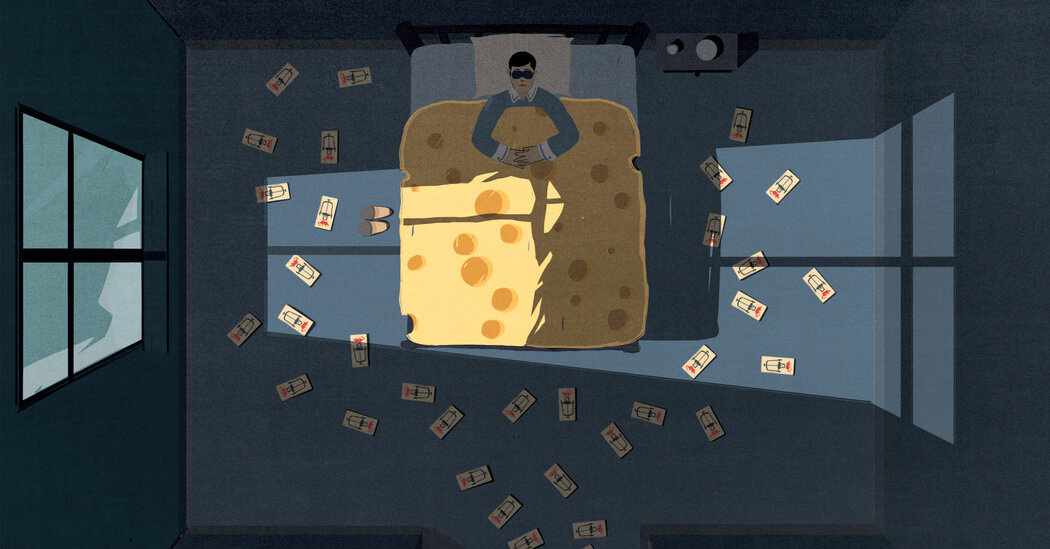People with persistent waking anxieties also tended to play out scenarios involving future work, relationships and life generally in their heads over the course of a day. Previous research has correlated this pattern to scene-shifting in dreams: the frequent changing of the setting, from indoors to outdoors, city to country, mountains to coast. Dr. MacKay and Dr. DeCicco found that dreamers during the first phase of the pandemic recorded far more such shifts in their REM mini-dramas.
“These are classic anxiety dreams,” Dr. DeCicco said.
In another of the studies, Dr. Barrett recruited nearly 3,000 people online to track, describe and write about their dreams in a digital form. She assessed the content of those essays, using a language-analysis algorithm that maps words onto categories like “anger,” “sadness,” “body,” “health” and “death.” These dreams, too, had all the hallmarks of heightened waking anxiety, but emotions like anger and sadness were much more prevalent among women than men.
“I wasn’t expecting this, but the findings suggest to me this idea that men are mainly experiencing fear of getting sick and dying, health fears,” Dr. Barrett said. “Women have been weathering more secondary effects; they tend to be the ones nursing sick family members, more often than males, for instance. I suspect this is the single most likely reason that sadness is up for women in these times.”
Not all the dreams, in either study, were infused with darkness and fear, and many were pleasant, involving reunions with friends or family, or featuring the containment and elimination of the virus. They included wishes and threats, healthy measures and mistakes, and adjustments to news of the spread: learning and emotional processing. There were also periodic injections of hope.
“I dreamed that SARS-Cov 2, as proteins, make music and so, to find the cure, scientists had to compose a melody that fit with the one SARS-Cov 2 produced,” one respondent wrote in Dr. Barrett’s survey. “Then they injected this as a vaccine and people get well.”
In short, the studies suggest that dreaming does not serve just one purpose but many, likely including most of the above explanations from theorists. Dr. Hobson’s warming-the-circuits idea is equally impossible to rule out, given all the dream activity that qualifies as mental gibberish and defies even the cleverest of metaphor-makers.
For everyday dreamers during the pandemic, it may be enough to know that Covid-19 nightmares, like any others, tend to be emotionally over-the-top. “It was scary in the dream, but you wake up and it’s funny,” Dr. Barrett said. “The crisis is smaller than you thought.”
[ad_2]
Source link


